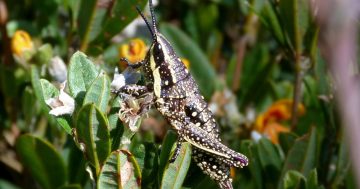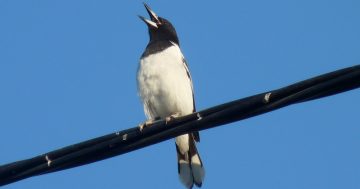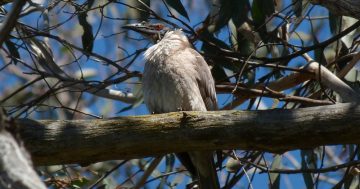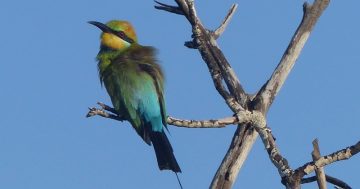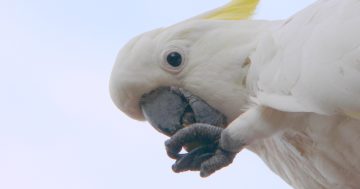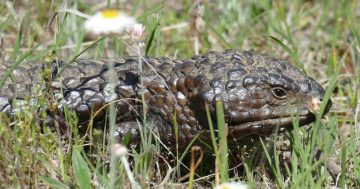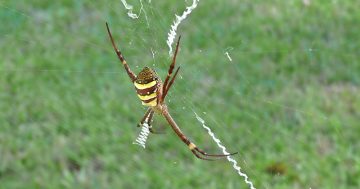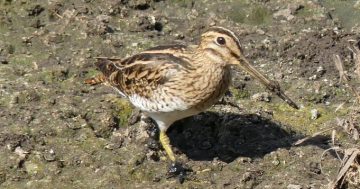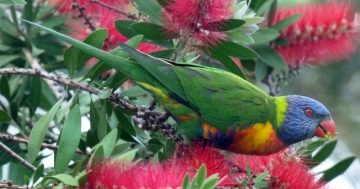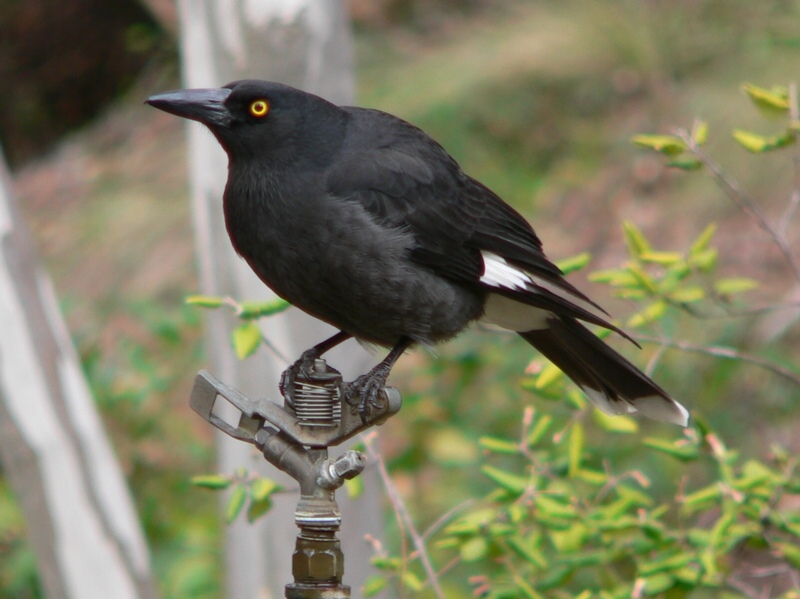
Pied currawongs are very familiar Canberra birds. Photo: Ian Fraser.
My last column was still summer-oriented in that it featured the blue-tongued lizards that bask in our sunny yards. Your comments on it confirmed that, as I’d expect, blueys are firm Canberra favourites. Today I’ve switched to an autumn theme, and to an animal that I know doesn’t have as many fans.
I arrived in Canberra at the start of 1980 and for the first couple of months or so of the year there were no currawongs to be seen in Canberra at all.
Then in autumn, as the first cold breezes trickled down from the mountains and nights took on a chill, suddenly Canberra’s parks and ovals were full of the wild jamborees of hundreds of pied currawongs arriving from the snow gums of the Brindabellas. They yodelled and shrilled and the quietness of days was shattered.
The thing is that back then, no currawongs bred in Canberra – they all flew up to the mountains in spring, bred up there out of sight and mind, and returned with their offspring only when the first hints of frosts began to stir in the ranges. Hence the autumn celebrations, which still happen.
It was during the following decade that some currawongs seemingly began to realise that they didn’t need to make the journey every year.
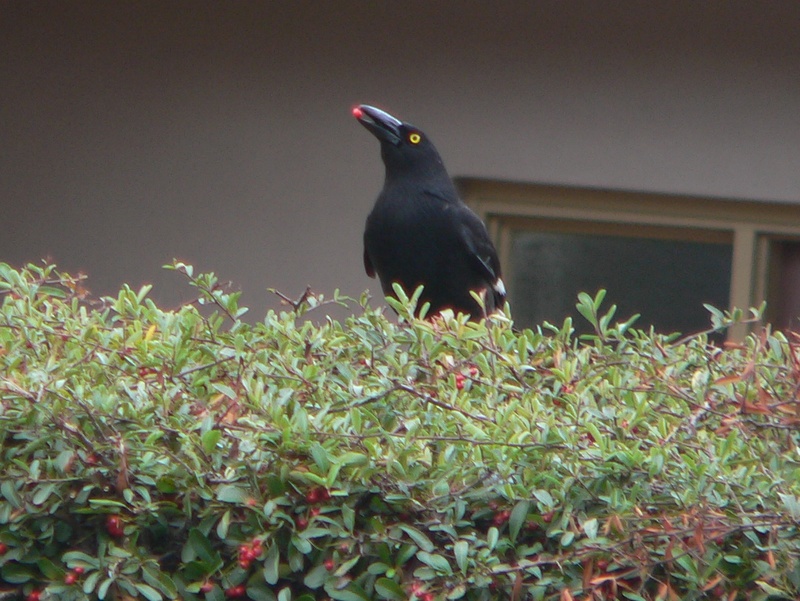
A pied currawong eating firethorn berries, then spreading the seeds. Photo: Ian Fraser.
As the suburbs expanded, so did the food sources the currawongs needed. Most importantly, currawongs are mostly fruit eaters and the berry-bearing shrubs in gardens suited them well (especially firethorns and cotoneasters). These shrubs were spread – to a large degree by the currawongs themselves, who ate the fruit and voided the seeds – to parks and hill reserves.
Most of the animals they do eat seem to be the big stick insects which live in the forest canopy. It is believed that pied currawongs provide an important protection to the forests by keeping these stick insects in check.
But the berries and stick insects aren’t quite the only items on the menu all-year round. Developing Canberra gardens provided nesting opportunities for smaller birds, and for the few weeks of the year that currawongs are feeding their own chicks, the chicks of smaller birds are an important protein source for them.
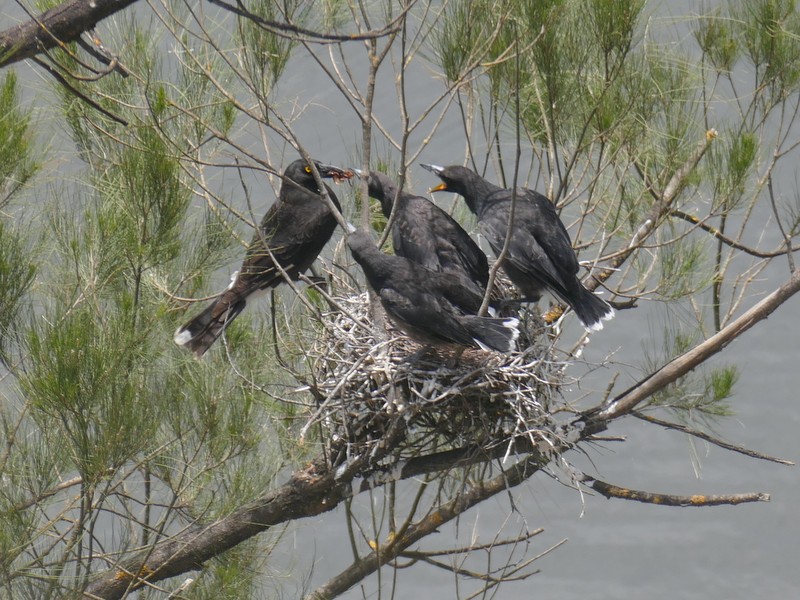
Pied currawong feeding chicks on the outskirts of Canberra. Photo: Ian Fraser.
And it is from here I think that most of the antagonism towards currawongs springs. I quite understand how distressing it can be when a fondly watched nest of young birds is suddenly emptied by a currawong intent on keeping up the demands of its own babies. I feel it too.
But I think it’s worth thinking this one through a little further, so just two points before moving on to other, lighter currawong snippets.
First, we’ve created the situation whereby currawongs (and some other common garden birds) can remain and thrive in an area where they were not previously able to. That’s not good or bad, it just is. (For many other species the reverse is true – they can no longer live here.)
Second, and perhaps more relevantly, when currawongs breed in the mountains, as many of them still do so, they’re feeding their chicks on other young birds, but two things are different. We don’t see it, so we don’t think about it. And those nestlings are native birds, while a large proportion of the nestlings taken by currawongs in Canberra are exotics – sparrows, starlings, mynas, blackbirds – which could be seen as a benefit.
The name currawong is of Indigenous origin, and surely reflects the wild calls of the pied currawong, but dictionaries are divided as to which language. Both Jagawa (south-east Queensland) and Dharuk (the Sydney area) are proposed.
However, until the 20th century, they were universally and awkwardly known in English as ‘crow-shrikes’ or ‘bell-magpies’. The first recorded alternative is ‘churwung’ from Brisbane in 1905 and the modern version suddenly appeared in an authoritative list of Australian birds in 1926. Very curious, but presumably it had been present in spoken English before that.
And one more comment on names. Pied currawongs were widely eaten by people and were one of the several birds known as ‘muttonbirds’. An early version of this was Hircine Magpie, from Latin for a goat, referring to the claimed ‘goatish’ smell of the hind-quarters, which were regarded as not worth eating.
You don’t have to like currawongs, but I hope I’ve given you food for thought.
Ian Fraser is a Canberra naturalist, conservationist and author. He has written on all aspects of natural history, advised the ACT government on biodiversity and published multiple guides to the region’s flora and fauna.
Original Article published by Ian Fraser on The RiotACT.



